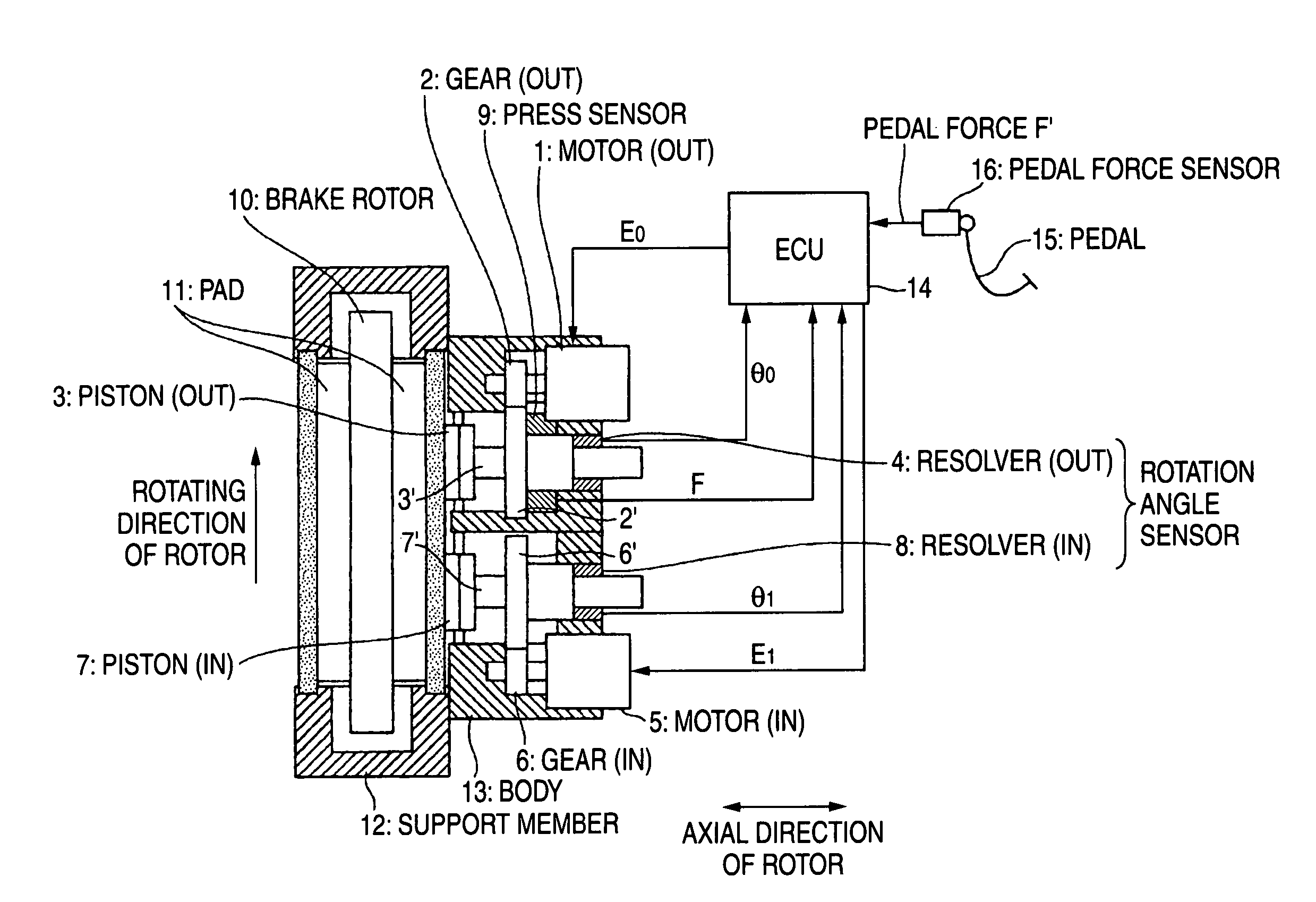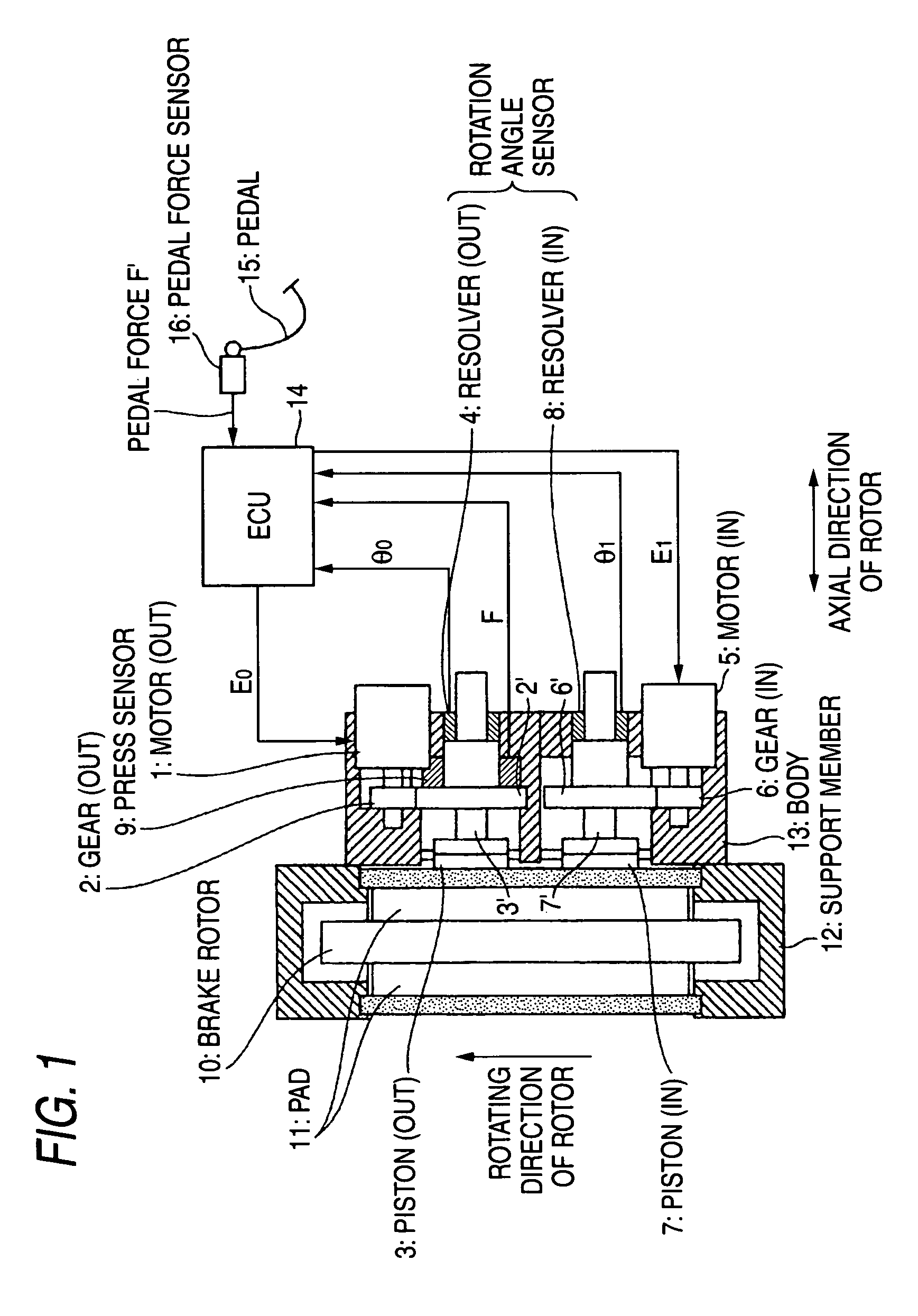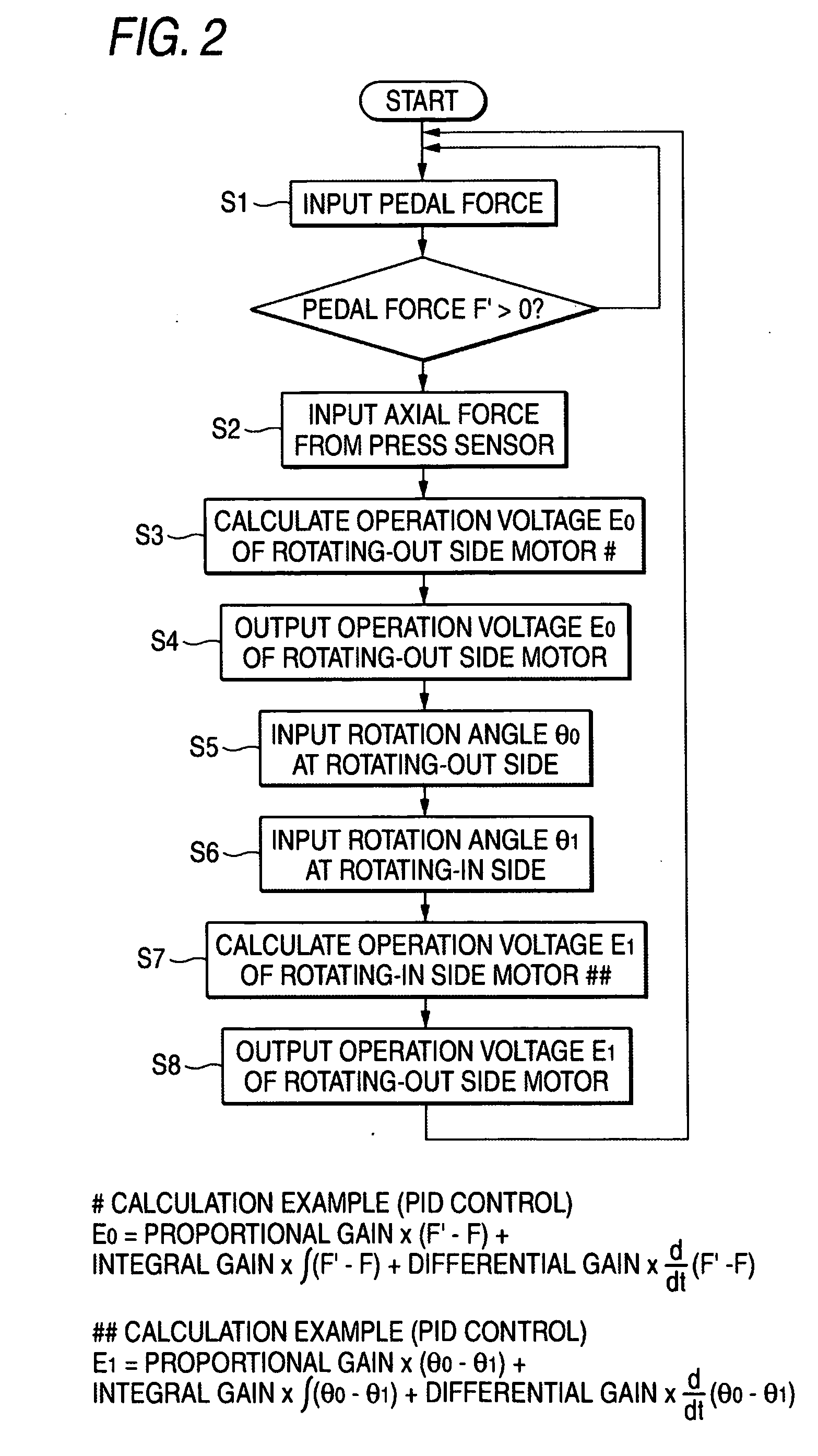Electric brake
a technology of brakes and brake rotors, applied in the direction of brake systems, brake components, transportation and packaging, etc., can solve the problems of insufficient to reliably prevent uneven wear of brake pads, and even wear of brake pads or brake rotors, so as to prevent uneven wear and suppress uneven wear
- Summary
- Abstract
- Description
- Claims
- Application Information
AI Technical Summary
Benefits of technology
Problems solved by technology
Method used
Image
Examples
Embodiment Construction
[0020] Exemplary embodiments of the invention will be described with reference to the accompanying drawings.
[0021]FIG. 1 is a view showing the entire configuration of an electric brake according to a first exemplary embodiment of the invention, and FIG. 2 is a flow chart of a control method of the electric brake according to the first exemplary embodiment. FIG. 3 is a view showing the partial configuration of an electric brake according to the second embodiments of the invention.
[0022] In the electric brake according to the first exemplary embodiment, as shown in FIG. 1, the electric brake converts rotational motions of motors fixed to a brake system into linear motions so as to move forward pistons of the brake system so that friction members 11 are pressed to a rotary member 10 to apply the brake. The pistons 3 and 7 are pressed to the friction member 11 at two points that are positioned at a rotating-in side and a rotating-out side in a rotating direction of the rotary member 1...
PUM
 Login to View More
Login to View More Abstract
Description
Claims
Application Information
 Login to View More
Login to View More - R&D
- Intellectual Property
- Life Sciences
- Materials
- Tech Scout
- Unparalleled Data Quality
- Higher Quality Content
- 60% Fewer Hallucinations
Browse by: Latest US Patents, China's latest patents, Technical Efficacy Thesaurus, Application Domain, Technology Topic, Popular Technical Reports.
© 2025 PatSnap. All rights reserved.Legal|Privacy policy|Modern Slavery Act Transparency Statement|Sitemap|About US| Contact US: help@patsnap.com



